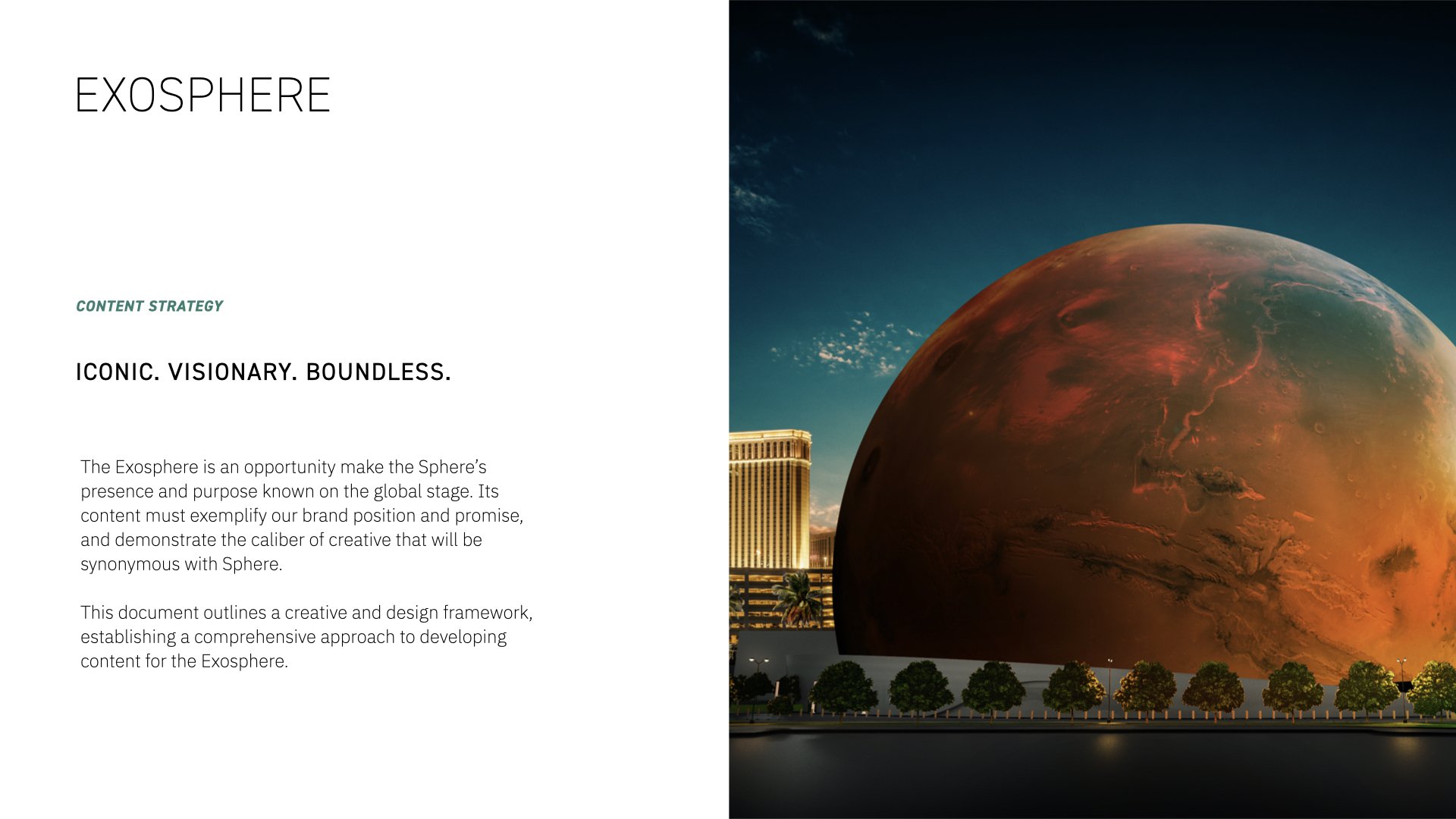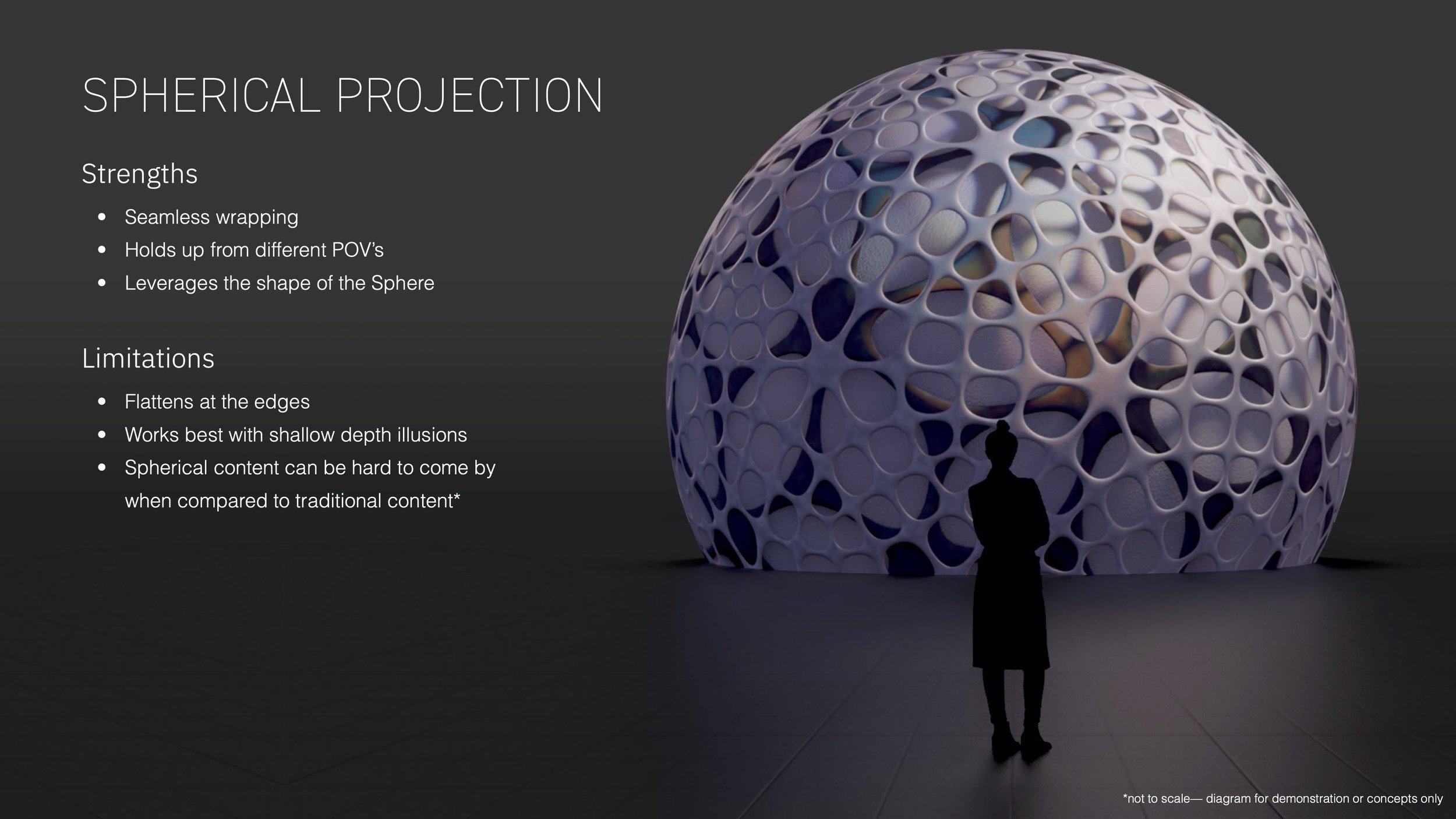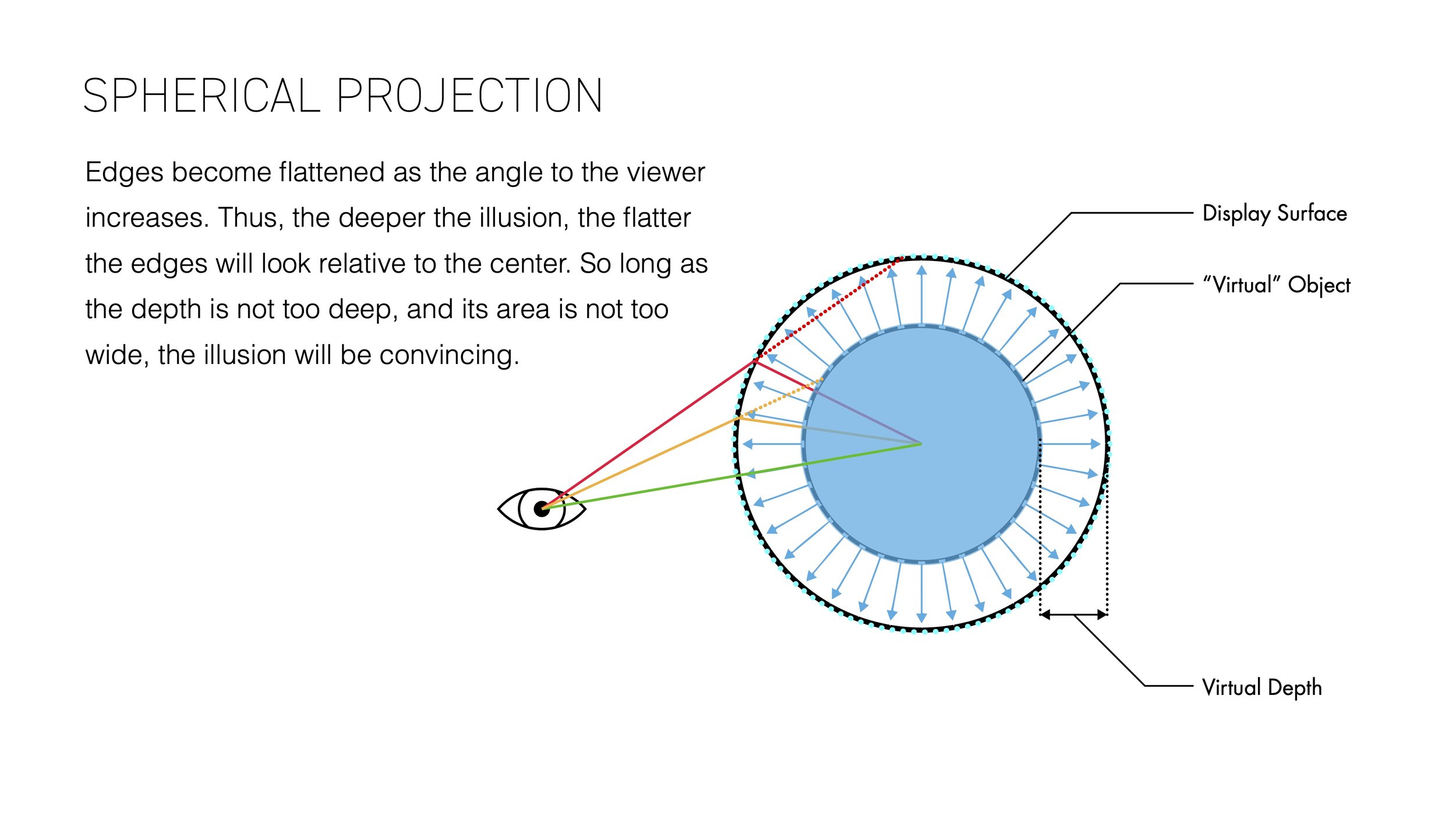
Sphere
Sphere is a world’s first $2.3B immersive immersive destination created by Sphere Entertainment Co., a spinoff from Madison Square Garden Entertainment.
As part of the startup executive leadership team, I initiated and led creation of the design function, immersive design guidelines, real-time tech, creator tools, and benchmark content. Due to confidentiality I am unable to showcase the majority of my work. A small sample is highlighted below. For more information on my work with Sphere, please get in touch.
Role
Senior Director, Experience Strategy & Design, then R&D, March 2019 - March 2023
Early design & development work under the Obscura umbrella, December 2017 - March 2019
U2 Residency
Goal: Help U2 open Sphere with a residency that exceeds their reputation for innovative live shows.
Challenge: Very short creative exploration and pre-production window, and even less time in the venue for technical production. The U2 team were initially integrated into the Sphere Studios pre-rendered content pipeline, resulting in a dysfunctionally slow creative iteration process.
Action: My team and I jumped in to specify technical architecture and solutions to enable rapid prototyping and remove blockers to integrating their established workflow in both the testing environment and at Sphere.
Result: Successful creative development, technical implementation, and launch of the sold out U2 residency with all concepts supported by our solutions.
Core Responsibilities: Strategy, Technical Architecture & Solutions Specification, Stakeholder Alignment, and Cross-functional Leadership.
Team: Willie Williams – Creative Director, John Gerrard – Artist, Stefaan Smasher Desmedt – Technical Director, Brandon Kraemer – Content Technical Director, Serhan Ardila Ulkumen - Lead Real-time Software Engineer, Michael Clement - Senior Real-time Engineer, Joshua Troub – Systems Technician.
John Gerrard for U2:UV Achtung Baby Live At Sphere (Image credit: Stufish Entertainment Architects)
John Gerrard for U2:UV Achtung Baby Live At Sphere (Image credit: Stufish Entertainment Architects)
John Gerrard for U2:UV Achtung Baby Live At Sphere (Image credit: Stufish Entertainment Architects)
Image credit: Stufish Entertainment Architects
Exosphere Content Production & Templates
Goal: Streamline and simplify the process of making content for the Exosphere. Demonstrate artistic capabilities and efficiency of real-time content, and leverage our real-time pipeline and tools to optimize the content production process for the Exosphere.
Challenge: The Exosphere is scheduled to operate 365 days per year, 18 hours per day. That’s a huge amount of content! How will internal and external creative teams create content effectively and efficiently for an entirely new inverted 360° medium that’s more challenging than it appears?
Action: Building on the mapping techniques work I led previously (see below), our team took on solving this problem as part of the Dynamic Content Suite/Sphere Content Development Kit. We created a real-time content production pipeline, benchmark content, and templates that delivered platform ready content in a matter of minutes, with powerful customizable parameters that allowed users to make creative decisions instantly.
Result: Our pipeline and templates reduced the total creative development and production time from the standard of 6-8 weeks down to 2-14 days.
Core Responsibilities: Vision, Strategy, Planning, Stakeholder Alignment, Design & Cross-functional Leadership, Product Requirements, and Team Coaching.
Team: Arwa Mboya – UX/Product Design Lead, Ron Robinson – Art Director, UI/UX Design & Dev – Sasha Menscikova, Nicole Johnson and Jacob Ugalde. Serhan Ardila Ulkumen – Lead Real-time Engineer, Taylor Shechet – Senior Technical Artist, Chelley Sherman – Senior Real-time Graphics Engineer.
Benchmark content created by the Real-time team, live launch on the Exosphere, 2023. (Artist/Developer Chelley Sherman)
Benchmark content created by the Real-time team, live launch on the Exosphere, 2023. (Artist/Developers Serhan Ardila & Taylor Shechet)
Benchmark content created by the Real-time team. Photo by Matt Ramirez
Benchmark content created by the Real-time team. Photo by Clayton Ham
Exosphere Content Strategy & Design Framework
Goal: Make the Exosphere an icon from day 1, create design guidelines to ensure content is successful, and define how to align programming with monetization efforts.
Challenge: The Exosphere is how Sphere will be introduced to the world. Not only will it broadcast the Sphere brand, but it will also serve as a substantial revenue generator for brand-aligned advertising partners. Those partners come with in-house and agency content creators. Creating a dynamic range of inverted 360° content is surprisingly complex and many internal artists struggled with understanding how to get artwork to appear as they intended.
Action: Defined content segments and distribution framework to support target revenue model, created design guidelines, executed design studies to establish a collection of mapping techniques, and tested them with a small team of internal and agency art directors and motion designers.
Result: Established the content strategy and design guidelines to support the advertising business and ensure all content creators could quickly leverage optimized design techniques.
Core Responsibilities: Vision, Strategy, Planning, Stakeholder Alignment, and Design Leadership.
Team: Will Atwood – Visual Design.
Sphere Quickstart Guide
Goal: Improve the process of onboarding talent responsible for creating content for Sphere’s internal 16k resolution media plane.
Challenge: Early content development tests were repeatedly missing the mark in terms of aligning the virtual content space with the media plane geometry. The result was a suboptimal or unusuable viewing experience. Additionally, the imaging team at the time were utilizing a multi-camera array to achieve the 16k resolution final image. This required a large amount of tedious and error-prone stitching.
Action: Create a technical document illustrating the importance of camera tilt and single-sensor camera efficiency to reduce imaging errors and make the case for an investment in a single-sensor camera solution. Images below are an excerpt, proprietary details such as optimal camera tilt angle are omitted.
Result: Reduced camera tilt errors by 90% and initiated the effort to develop the custom “Big Sky” Camera, capable of achieving Sphere’s 16k resolution with a single-sensor.
Core Responsibilities: Vision, Strategy, Planning, Stakeholder Alignment, and Design Leadership.
Team: Jim Ellis – Technical Director, Visual Designers - Naohiro Haitani & Will Atwood.




















